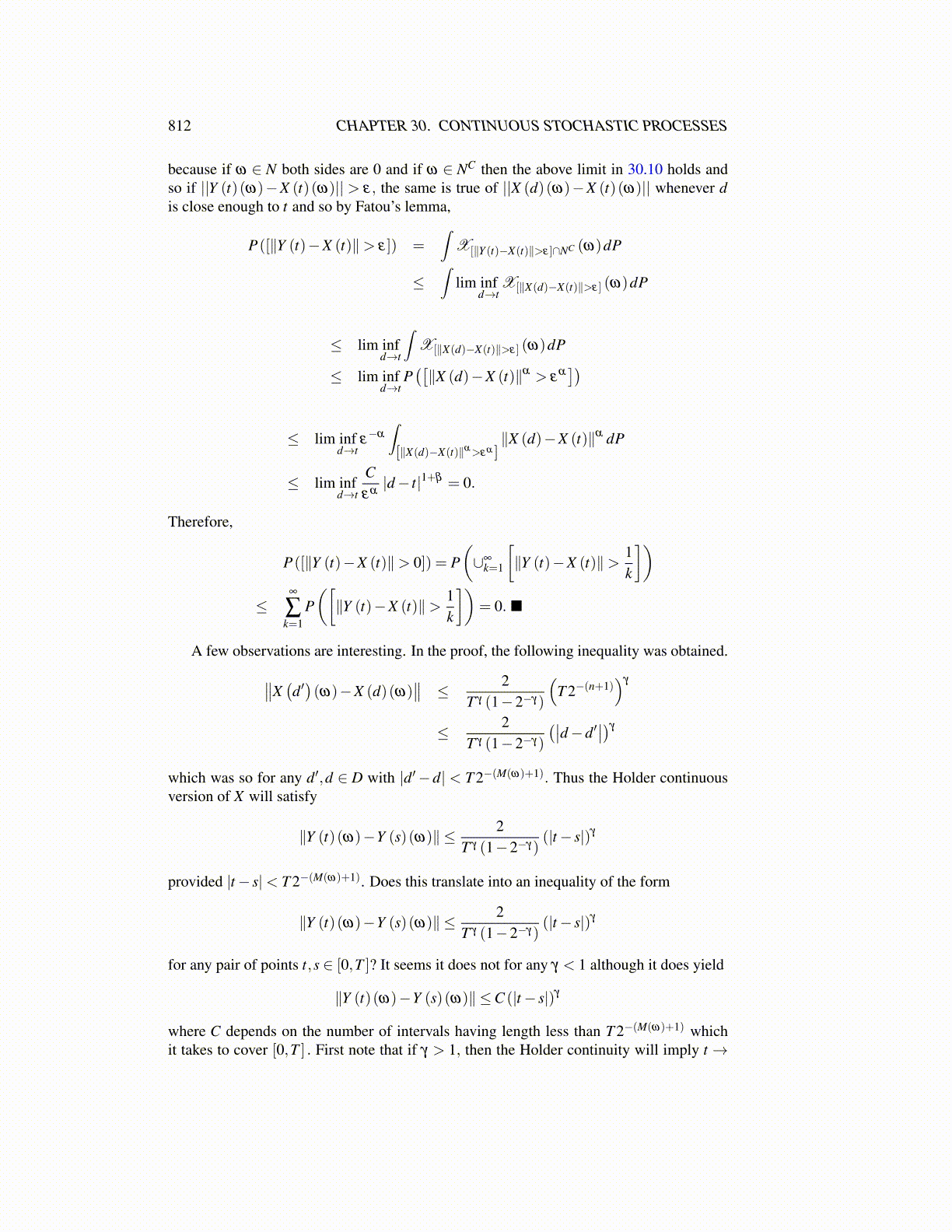
812 CHAPTER 30. CONTINUOUS STOCHASTIC PROCESSES
because if ω ∈ N both sides are 0 and if ω ∈ NC then the above limit in 30.10 holds andso if ||Y (t)(ω)−X (t)(ω)|| > ε, the same is true of ||X (d)(ω)−X (t)(ω)|| whenever dis close enough to t and so by Fatou’s lemma,
P([∥Y (t)−X (t)∥> ε]) =∫
X[∥Y (t)−X(t)∥>ε]∩NC (ω)dP
≤∫
lim infd→t
X[∥X(d)−X(t)∥>ε] (ω)dP
≤ lim infd→t
∫X[∥X(d)−X(t)∥>ε] (ω)dP
≤ lim infd→t
P([∥X (d)−X (t)∥α > ε
α])
≤ lim infd→t
ε−α
∫[∥X(d)−X(t)∥α>εα ]
∥X (d)−X (t)∥α dP
≤ lim infd→t
Cεα|d− t|1+β = 0.
Therefore,
P([∥Y (t)−X (t)∥> 0]) = P(∪∞
k=1
[∥Y (t)−X (t)∥> 1
k
])≤
∞
∑k=1
P([∥Y (t)−X (t)∥> 1
k
])= 0. ■
A few observations are interesting. In the proof, the following inequality was obtained.∥∥X(d′)(ω)−X (d)(ω)
∥∥ ≤ 2T γ (1−2−γ)
(T 2−(n+1)
)γ
≤ 2T γ (1−2−γ)
(∣∣d−d′∣∣)γ
which was so for any d′,d ∈ D with |d′−d| < T 2−(M(ω)+1). Thus the Holder continuousversion of X will satisfy
∥Y (t)(ω)−Y (s)(ω)∥ ≤ 2T γ (1−2−γ)
(|t− s|)γ
provided |t− s|< T 2−(M(ω)+1). Does this translate into an inequality of the form
∥Y (t)(ω)−Y (s)(ω)∥ ≤ 2T γ (1−2−γ)
(|t− s|)γ
for any pair of points t,s ∈ [0,T ]? It seems it does not for any γ < 1 although it does yield
∥Y (t)(ω)−Y (s)(ω)∥ ≤C (|t− s|)γ
where C depends on the number of intervals having length less than T 2−(M(ω)+1) whichit takes to cover [0,T ] . First note that if γ > 1, then the Holder continuity will imply t →